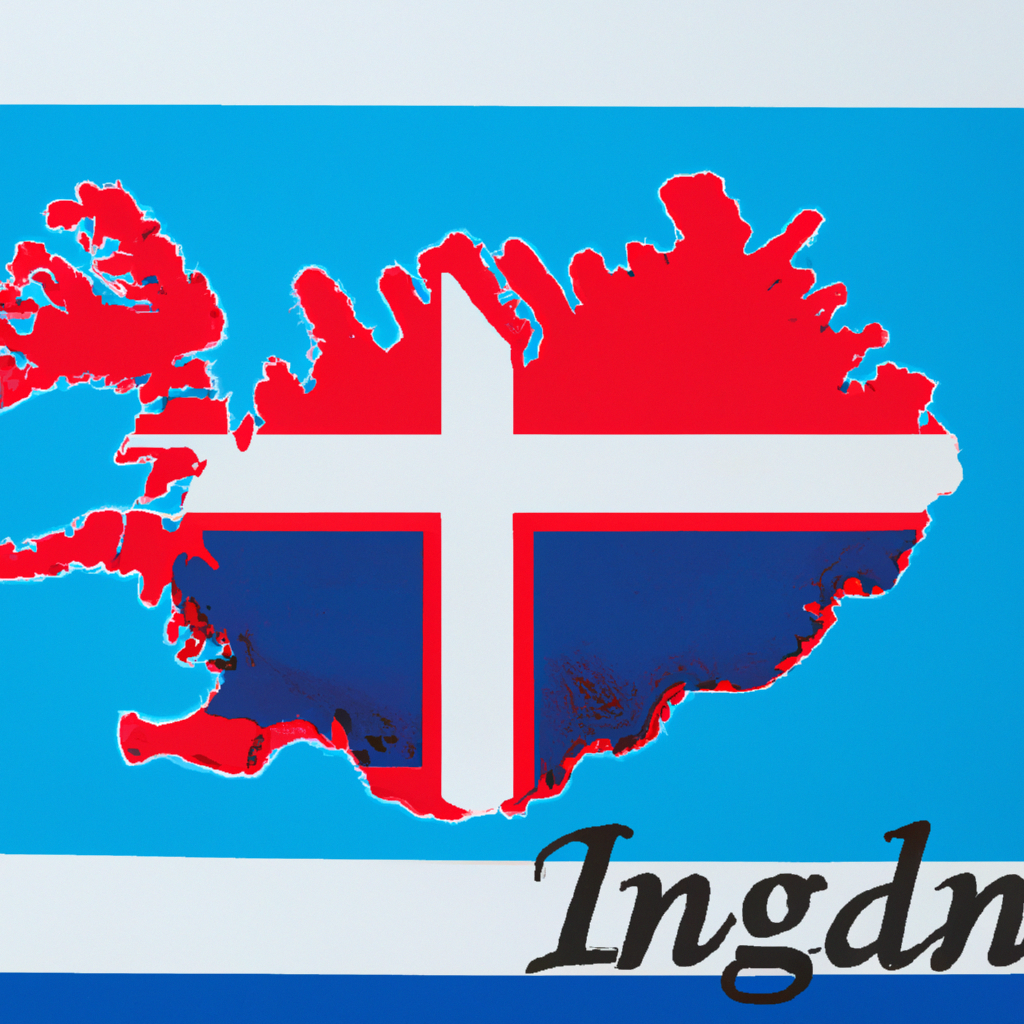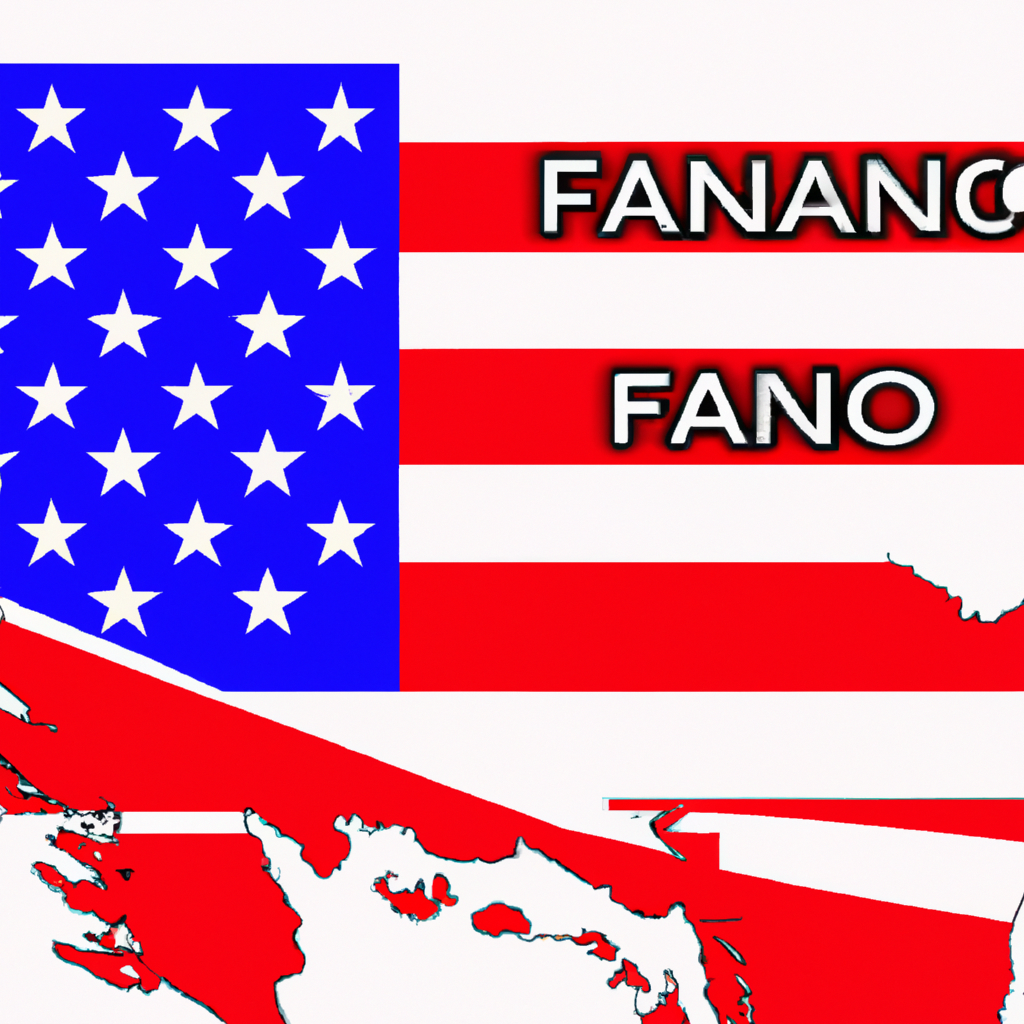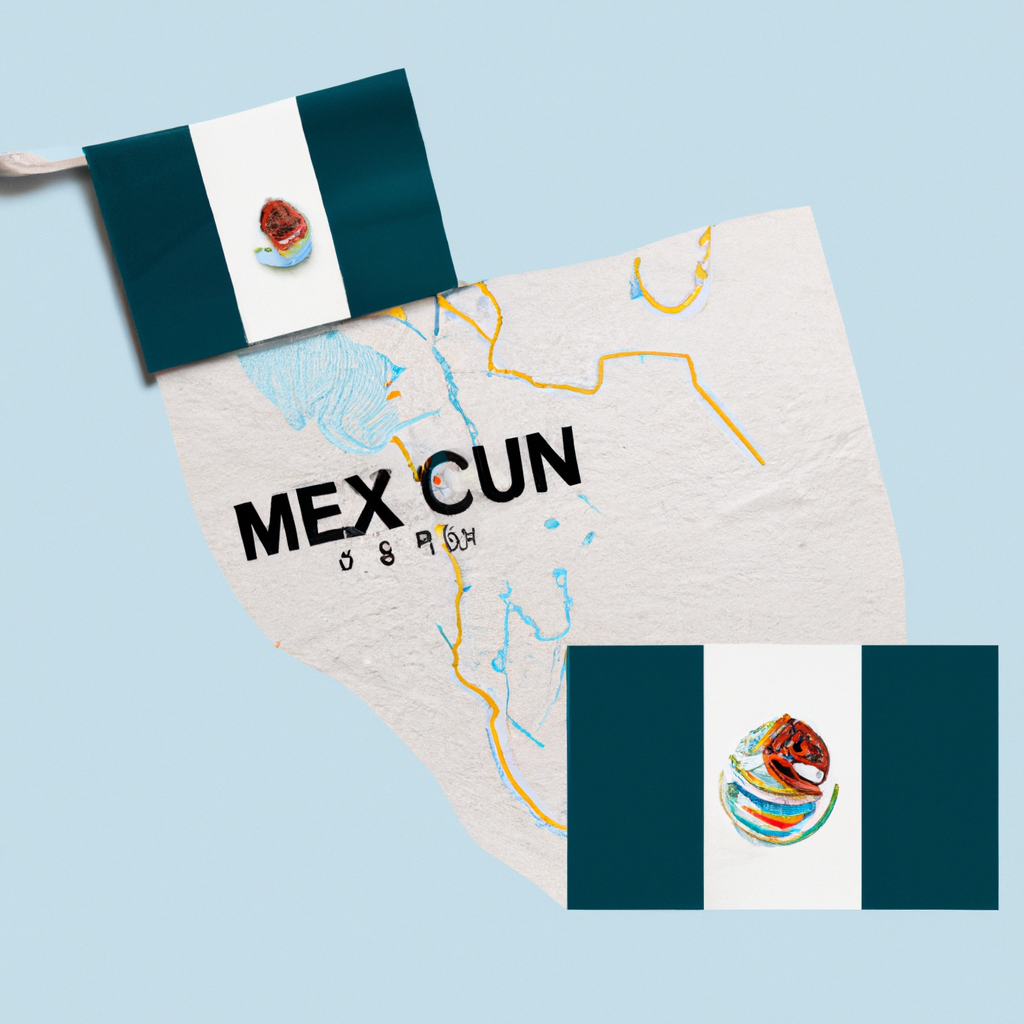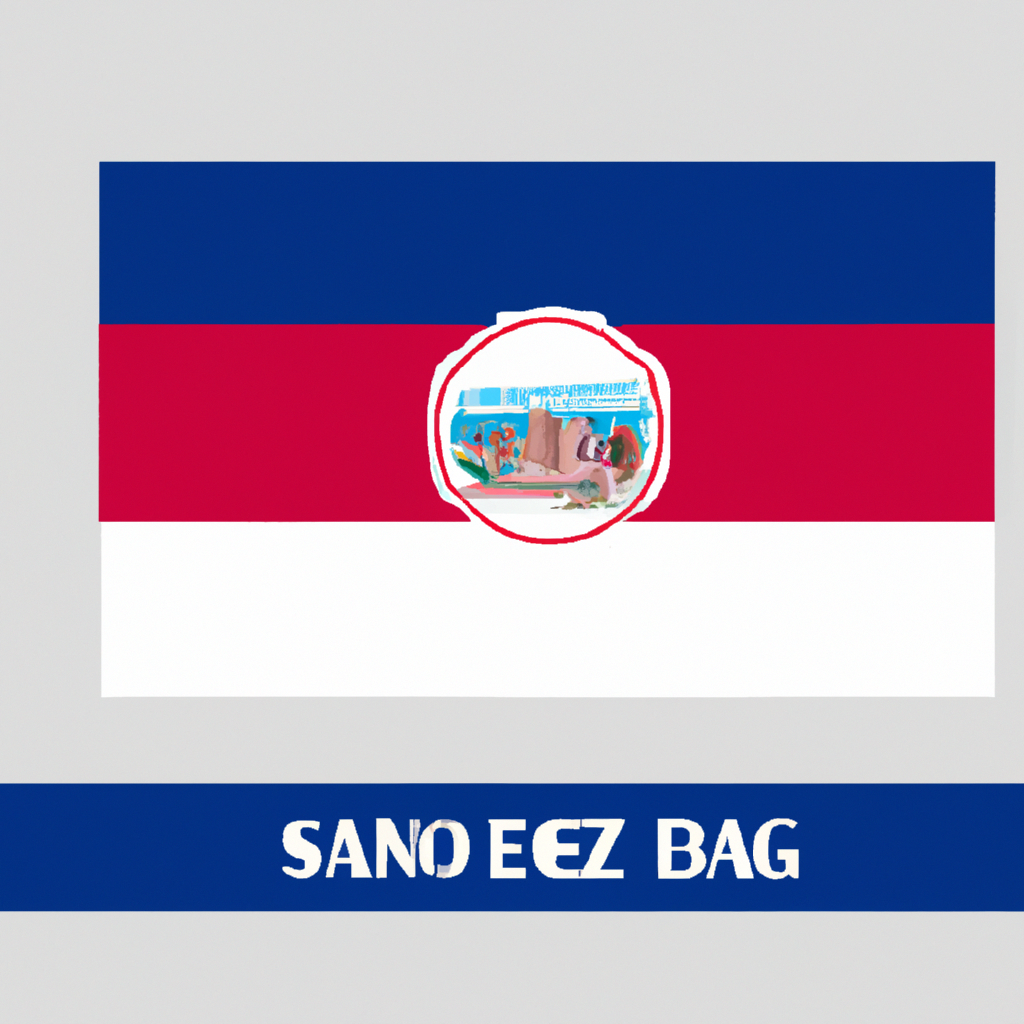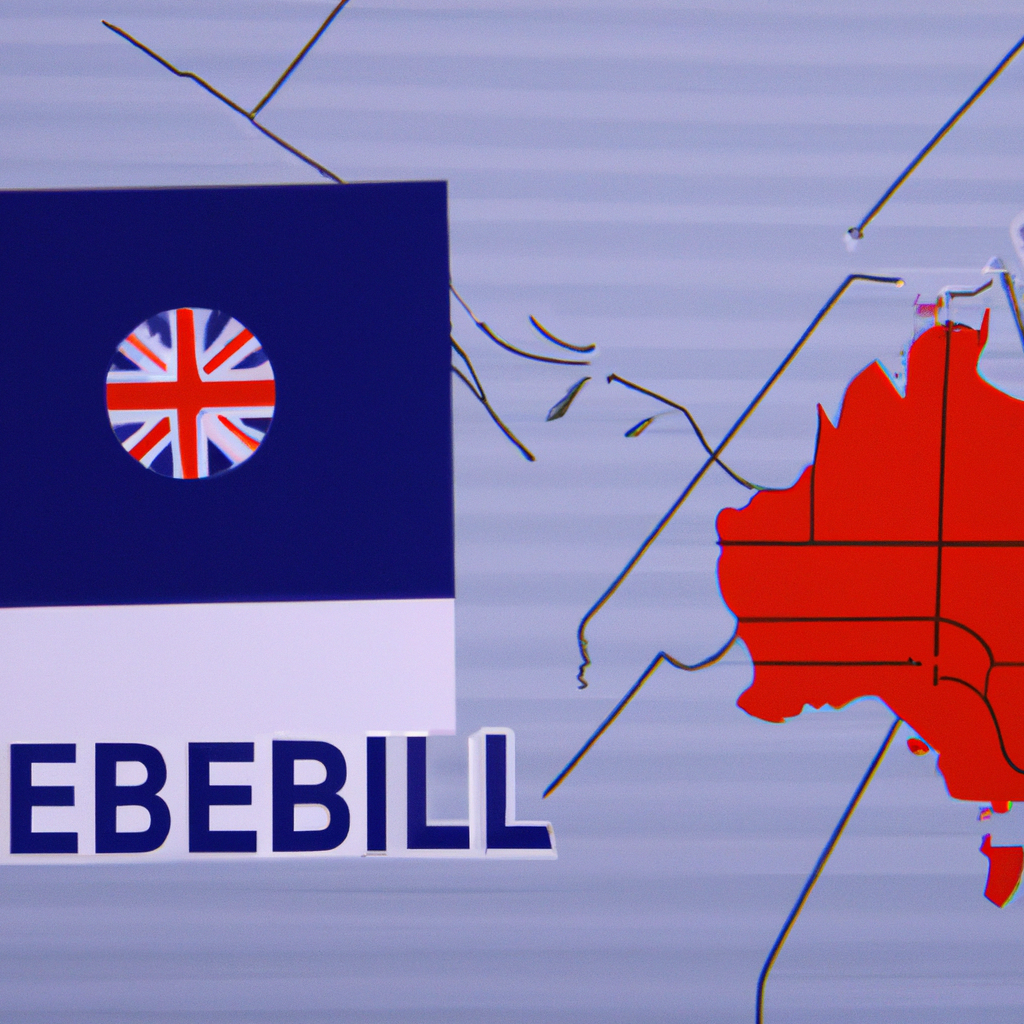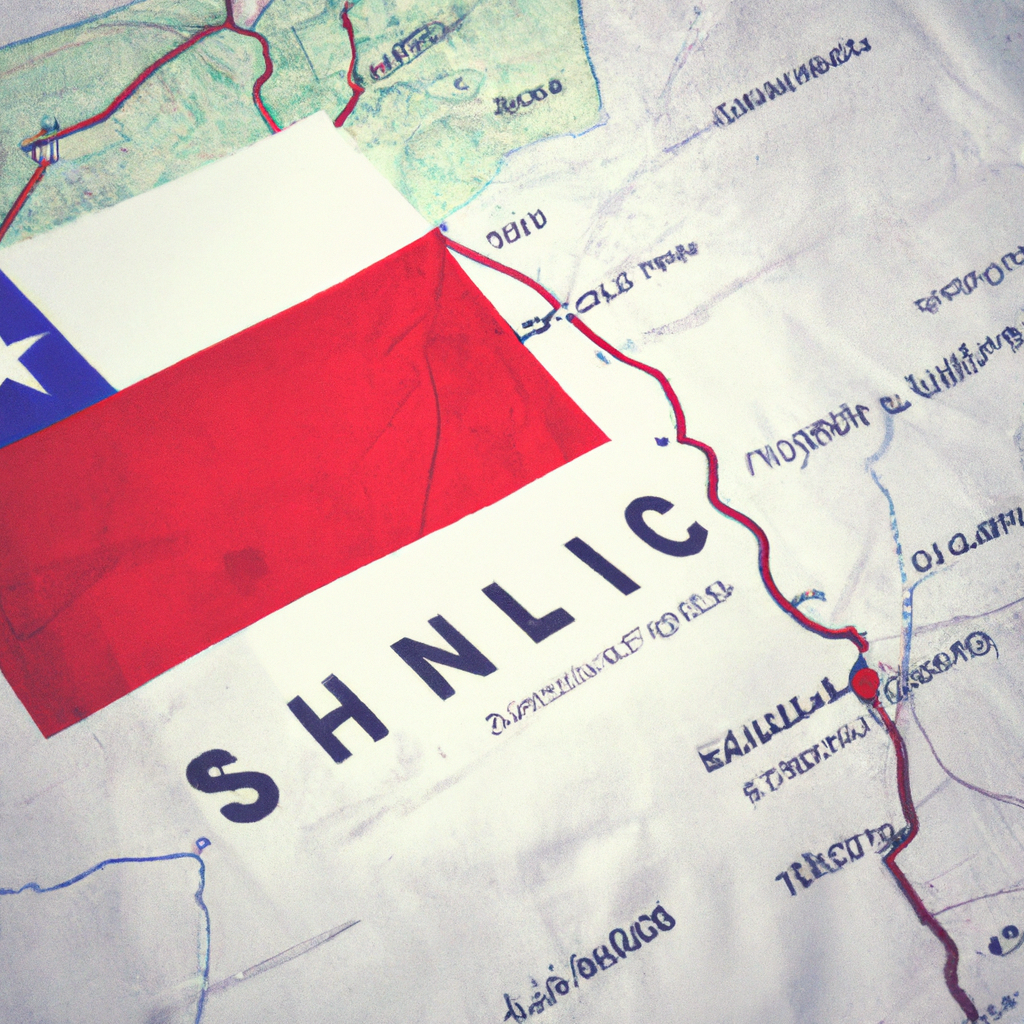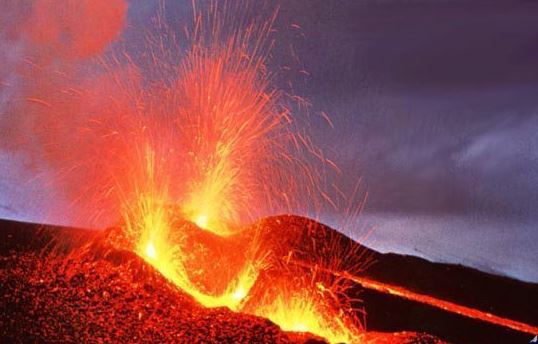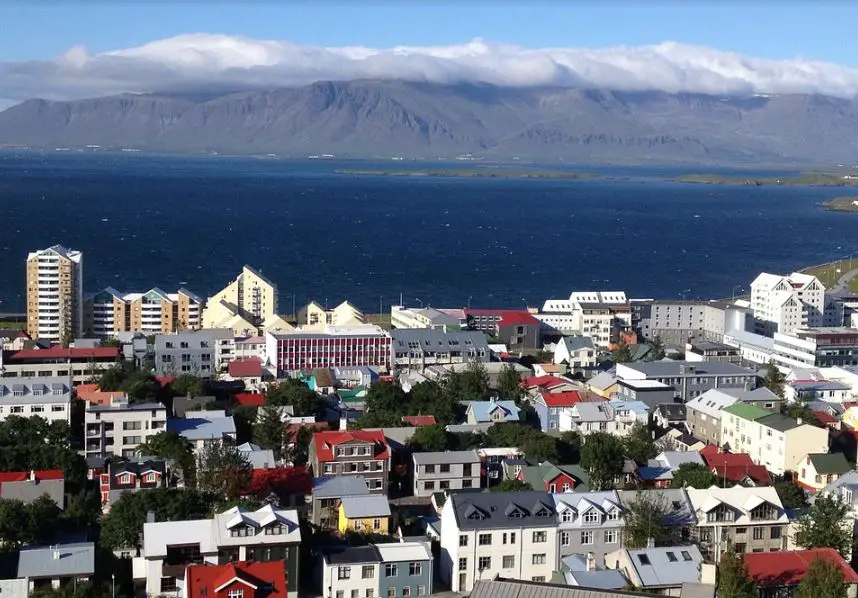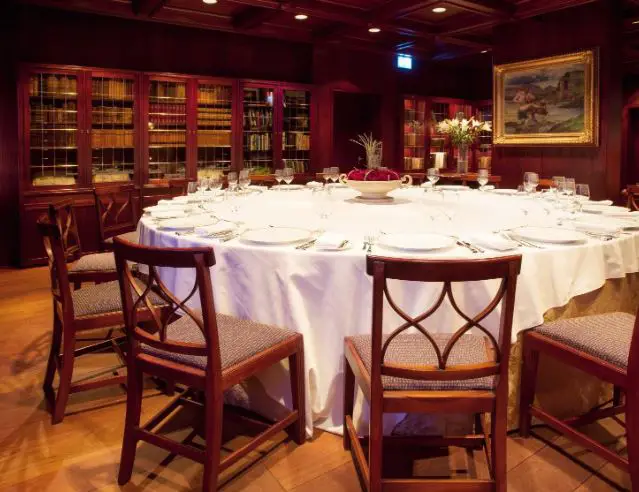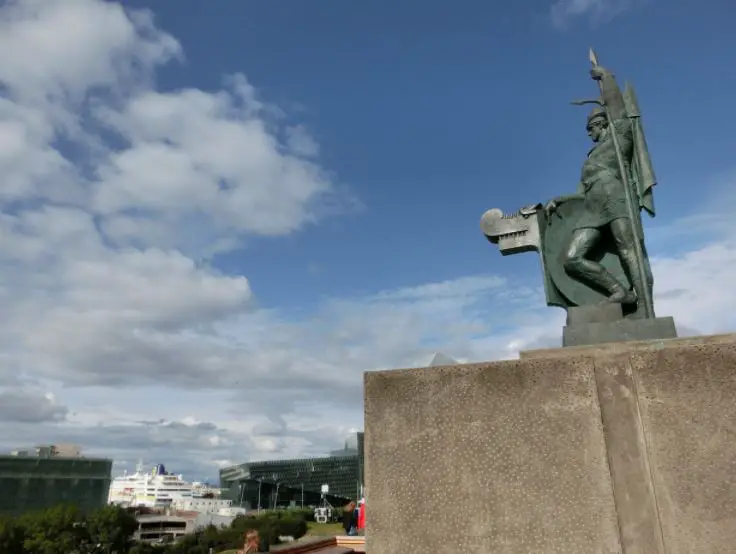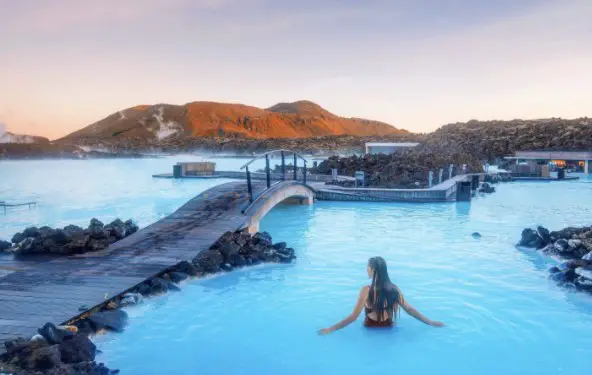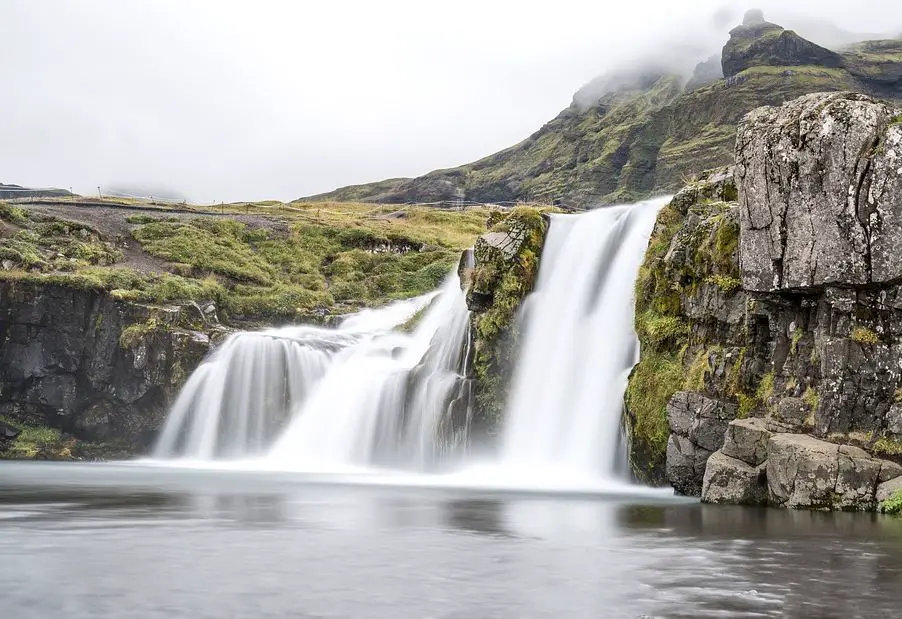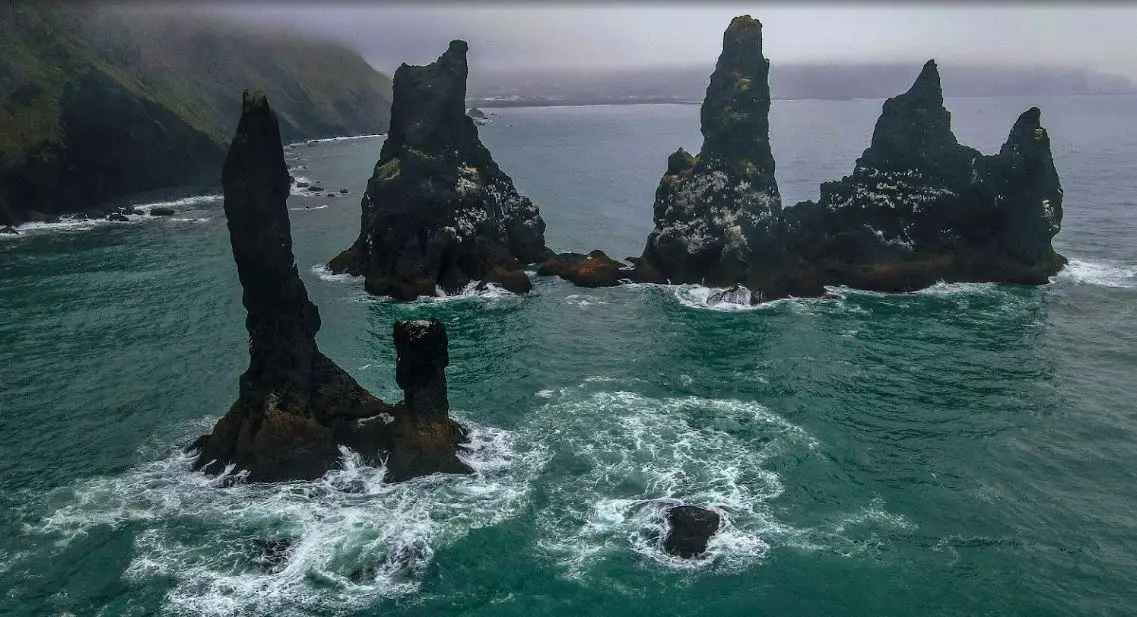Reykjavik, Iceland: Interesting Facts,History, Things to do,Why to Visit
Post ByAdequate Travel
Welcome to Reykjavik, Iceland! This incredible city is the world’s most northerly capital city in the world and it's a must visit spot for any traveler or history fan. The city is rich in culture and heritage, with its fascinating cultural attractions, unique history and interesting places to explore. Reykjavik is home to some of the most impressive volcanoes, glaciers and geysers, including the famous Great Geysir, which is one of the most active geysers in the world. With its winter nightlife scene, spectacular views and vivid colours, Reykjavik brings a magical feeling to every visit. There are plenty of exciting activities to do, like the Reykjavik Winter Lights Festival and various whale watching tours. So scroll down to learn more about the wonderful city, Reykjavik and its vibrant history, interesting facts, things to do and why you should visit.
Iceland is a Nordic island country located in the North Atlantic Ocean. It has a population of around 370,000 people and its capital is Reykjavik. Known for its stunning landscapes, including volcanoes, geysers, hot springs, and glaciers, Iceland is often referred to as the "Land of Fire and Ice." Tourism has become a major industry in recent years, attracting visitors from all over the world who come to witness the country's unique natural wonders. The economy is also supported by fishing, renewable energy, and a growing tech sector. Icelandic culture is rich in traditions and folklore, with a strong emphasis on nature and preservation. The country is known for its literary heritage, with a high proportion of the population being avid readers and writers. Additionally, Iceland is recognized for its progressive society, being the first country to elect an openly gay head of state in 2009.iceland tourist attractions offer a diverse range of experiences for every traveler.
Interesting facts
1. Land of Fire and Ice
Iceland is often referred to as the "Land of Fire and Ice" due to its unique geographical features. The country is known for its numerous active volcanoes and vast glaciers. Iceland sits on the Mid-Atlantic Ridge, a tectonic boundary where the North American and Eurasian plates meet, resulting in frequent volcanic activity. This volcanic activity has shaped Iceland's landscape and led to the formation of breathtaking landmarks such as the Eyjafjallajökull volcano and the Vatnajökull glacier.
2. Waterfall Paradise
Iceland is famous for its stunning waterfalls, offering a plethora of natural wonders to explore. Some of the notable waterfalls include:
- Gullfoss: One of the country's most iconic waterfalls, known for its powerful cascade and rainbows that form in the mist.
- Seljalandsfoss: This waterfall allows visitors to walk behind the cascading water, providing a unique and immersive experience.
- Skógafoss: With a width of 25 meters (82 feet) and a drop of 60 meters (197 feet), Skógafoss is an impressive sight to behold.
3. The Northern Lights
Iceland is one of the best places in the world to witness the mesmerizing phenomenon of the Northern Lights, also known as the Aurora Borealis. The country's location near the Earth's magnetic pole makes it a prime spot for viewing this dazzling natural light display. The Northern Lights occur when charged particles from the sun collide with atoms and molecules in the Earth's atmosphere. Visitors to Iceland have a higher chance of seeing this breathtaking spectacle during the winter months, especially in areas away from city lights.
4. Geothermal Energy
Iceland takes advantage of its geothermal activity by utilizing it for energy production. Over 90% of Iceland's buildings are heated by geothermal energy, making it one of the most sustainable countries in the world. The country's abundant geothermal resources allow for the generation of electricity and the heating of water, which is then distributed to homes and businesses. The Blue Lagoon, a popular geothermal spa, is also an excellent example of Iceland's utilization of this natural heat source.
5. Unique Language
Icelandic, the official language of Iceland, is a unique and fascinating language. It has changed very little over the centuries, making it one of the closest modern languages to Old Norse. Icelandic also features complex grammar and pronunciation, including the use of "thorn" letters (þ and ð) that do not exist in most other languages. The conservation of the Icelandic language is highly valued by the nation, and efforts are made to maintain its purity and integrity.
From museums to parks,iceland tourist attractions offer something for everyone, making it a versatile destination for all type of tourists.History of Iceland
The history of Iceland dates back to the settlement of Norse sailors in the 9th century. Here is a detailed account of the country's history:
1. Settlement and Viking Age
The settlement of Iceland began around the year 870 when Norwegian chieftain Ingólfur Arnarson became the first permanent settler. Viking chieftains and their followers continued to arrive over the next decades, establishing small independent communities.
2. Commonwealth Era
During the 10th and 11th centuries, Iceland developed a unique political system known as the Commonwealth. It was a decentralized state without a monarch, where power rested with local chieftains and an assembly called the Alþingi. The Alþingi, which is still in existence today, served as a platform for legal disputes, legislative decisions, and cultural exchange.
3. Adoption of Christianity
In the year 1000, Icelanders decided to adopt Christianity after a period of religious turmoil. The decision was made at the Alþingi amid pressure from neighboring Christian powers and influential Icelanders. The conversion to Christianity marked a significant turning point in the cultural and religious history of Iceland.
4. Union with Norway
In the 13th century, Iceland gradually came under the control of Norway through a series of events. The Alþingi urged the Norwegian king to be their ruler, resulting in the establishment of a personal union between the two countries. This union lasted until Norway came under Danish rule in the 14th century.
5. Danish Rule and Independence Movements
From the 14th century onwards, Iceland was under Danish rule. This period saw economic and political challenges for Iceland, leading to discontent among its population. Independence movements arose in the 19th and early 20th centuries, seeking autonomy or complete independence from Denmark.
6. The Republic of Iceland
Iceland finally became a fully sovereign state on December 1, 1918, when it entered into a personal union with Denmark known as the Kingdom of Iceland. This union ended in 1944 when Iceland declared itself a republic, severing all ties with Denmark. Since then, Iceland has developed as an independent nation.
Exploring the rich heritage of historical sites in iceland is a journey through time and culture.Famous Things of Iceland
1. Aurora Borealis:
The Northern Lights, also known as the Aurora Borealis, are a natural phenomenon that can be seen in Iceland. This mesmerizing display of colorful lights dancing across the sky is caused by the interaction between the Earth's magnetic field and charged particles from the sun. Iceland's location close to the Arctic Circle makes it an ideal spot to witness this breathtaking spectacle. Tourists often flock to places like Reykjavik or remote spots in the countryside to catch a glimpse of the Northern Lights.
2. Geothermal Springs:
Iceland sits on top of a geologically active region with numerous geothermal springs and hot springs. The most famous of these is the Blue Lagoon, a natural hot spring with mineral-rich waters known for their healing properties. People from all around the world visit the Blue Lagoon to relax, soak in the warm waters, and indulge in various spa treatments. Another popular geothermal spring is the Myvatn Nature Baths, located in the north of Iceland.
3. Glaciers and Ice Caves:
Iceland is home to several massive glaciers, including the Vatnajökull Glacier, which is the largest in Europe. These icy landscapes offer breathtaking views and unique experiences. Visitors can go ice hiking, snowmobiling, or even explore the mesmerizing ice caves created by the meltwater flowing beneath the glaciers. The crystal-clear ice formations inside the caves create a surreal environment that is a photographer's dream.
4. Waterfalls:
Iceland is renowned for its stunning waterfalls, which are a result of the country's diverse landscape and volcanic activity. One of the most famous waterfalls is Gullfoss, also known as the "Golden Falls." This majestic waterfall cascades down in two steps, creating a dramatic and captivating sight. Another iconic waterfall is Seljalandsfoss, where visitors can walk behind the cascading water curtain, providing a unique perspective and photo opportunity.
5. Icelandic Horses:
The Icelandic horse is a unique breed that has been isolated on the island for over a thousand years. These small, sturdy horses are known for their gentle nature, sure-footedness, and distinct tölt gait. They are closely associated with Icelandic culture and tradition. Visitors can explore the Icelandic countryside on horseback, go on guided riding tours, or even witness annual horse shows and competitions.
Overall, Iceland offers a wide range of famous attractions and experiences, ranging from natural wonders like the Northern Lights and geothermal springs to glaciers, waterfalls, and cultural elements such as the Icelandic horses. These attractions showcase the country's stunning natural beauty and provide visitors with unforgettable memories.Discover some unique facts about iceland that will leave you amaze and intrigue.Culture of Iceland
The culture of Iceland is rich and unique, strongly influenced by the country's Nordic heritage, isolation, and the harsh climate. Here, we will explore some key aspects of Icelandic culture:
1. Language
Icelandic is the official language of Iceland and has its roots in Old Norse. The language has remained relatively unchanged for centuries, making it easier for locals to understand ancient texts. For example, the famous sagas, rich in historical and literary value, are still read and understood by many Icelanders today.
2. Literature
Icelandic literature holds a significant place in the country's cultural identity. The sagas mentioned earlier are a prime example of this, with numerous tales depicting the history and mythology of Iceland. Modern Icelandic literature also has a strong reputation, producing notable authors such as Halldór Laxness, winner of the Nobel Prize in Literature.
3. Music
Icelandic music is diverse and often experimental. Traditional Icelandic music includes folk and classical elements, with a particular emphasis on vocal harmonies. In recent years, Icelandic musicians have gained international recognition, such as the band Sigur Rós and the singer Björk.
4. Visual Arts
Icelandic visual arts demonstrate a wide range of styles, from traditional paintings depicting landscapes and nature to contemporary and abstract works. The country's natural beauty and unique landscapes often inspire artists, resulting in stunning creations. One famous Icelandic painter is Jóhannes Sveinsson Kjarval.
5. Cuisine
Icelandic cuisine is heavily influenced by the country's geographical location and natural resources. Traditional dishes include lamb, fish, and dairy products. Unique delicacies like hákarl (fermented shark) and svið (sheep's head) showcase the Icelandic people's resourcefulness in utilizing every part of the animals they rely on for sustenance.
Overall, the culture of Iceland blends its ancient heritage with modern influences, creating a dynamic and vibrant society. Whether through literature, music, visual arts, or cuisine, Icelanders take pride in their cultural identity and continue to celebrate it.Immerse yourself in the local culture by exploring iceland's top-rated tourist attractions.Cuisine of Iceland
The cuisine of Iceland is influenced by the country's geographical location, climate, and traditional farming practices. Icelandic food is known for its unique ingredients and traditional dishes that have been passed down through generations. Here are some key elements of Icelandic cuisine:
1. Seafood
Iceland is surrounded by cold waters filled with a variety of fish, making seafood a significant part of the Icelandic diet. Popular seafood dishes include harðfiskur (dried fish), plokkfiskur (fish stew), and traditionally prepared fermented shark called hákarl.
2. Lamb and Dairy Products
Lamb is the most commonly consumed meat in Iceland, thanks to the country's vast grasslands and free-roaming sheep. Icelandic lamb is known for its rich flavor and tender texture. Dairy products like skyr (a yoghurt-like dairy product) and various types of cheese, such as mysost and súrmjólkurhræringur, also play an important role in Icelandic cuisine.
3. Potatoes and Root Vegetables
Due to the short growing season and challenging climate, traditional Icelandic vegetables are limited. Potatoes and root vegetables like turnips, carrots, and rutabagas are commonly grown and used in Icelandic cuisine. Sometimes these vegetables are pickled or added to stews and side dishes.
4. Fermented and Preserved Foods
Preservation techniques have long been utilized in Icelandic cooking to preserve food during the harsh winter months. Fermented foods like skyr and sauerkraut have been essential for adding flavor and nutritional value to the diet. Rúgbrauð, a traditional Icelandic rye bread, is baked in underground geothermal ovens and can be stored for a long time.
5. Icelandic Delicacies
Icelandic cuisine is also known for some unique delicacies. These include:
- Puffin: Puffin meat, usually served cured or smoked, is considered a delicacy in Iceland.
- Reindeer: Reindeer meat is a popular choice for hearty dishes like stews during special occasions.
- Sheep's Head: Svið, a sheep's head, is a traditional Icelandic dish usually prepared by boiling the head and serving it whole or halved.
- Brennivín: Brennivín is an Icelandic schnapps made from fermented potato mash and flavored with caraway seeds.
Overall, Icelandic cuisine offers a range of unique and traditional dishes that celebrate the country's natural resources and cultural heritage.
Discover unique facts about iceland, a destination filled with rich history and natural beauty.1. Explore the Golden Circle
The Golden Circle is a popular tourist route in Iceland that consists of three main attractions: Þingvellir National Park, Geysir geothermal area, and Gullfoss waterfall. Þingvellir National Park is a UNESCO World Heritage Site where you can walk between the tectonic plates of Europe and America. The Geysir geothermal area is known for its geysers, including the famous Strokkur geyser that erupts every few minutes. Gullfoss waterfall is a stunning two-tiered waterfall that is a must-see in Iceland.
2. Visit the Blue Lagoon
The Blue Lagoon is a geothermal spa located in a lava field and is one of Iceland's most famous attractions. Its milky blue waters are rich in minerals and are known for their healing and relaxing properties. You can soak in the warm waters, enjoy a silica mud mask, and even indulge in a spa treatment. The Blue Lagoon is a unique and rejuvenating experience.
3. Explore Reykjavik
Reykjavik, the capital city of Iceland, offers a range of attractions and activities. You can visit the iconic Hallgrimskirkja church, explore the quirky street art, and stroll along the waterfront promenade. Take a walk in the colorful neighborhood of Þingholt, visit the National Museum of Iceland to learn about the country's history, or go shopping for Icelandic design and local products in the downtown area. Reykjavik also has a vibrant nightlife scene with many bars, restaurants, and clubs.
4. Discover the South Coast
The South Coast of Iceland is known for its breathtaking landscapes, including black sand beaches, waterfalls, and glaciers. Visit the famous Seljalandsfoss waterfall, where you can walk behind the cascading water, and the Skógafoss waterfall with its powerful flow. Explore the glacier lagoon of Jökulsárlón, where icebergs float in a stunning glacial lake, or take a guided tour to explore the ice caves in Vatnajökull National Park. The South Coast is a paradise for nature lovers and offers endless opportunities for outdoor adventures.
5. Experience the Northern Lights
Iceland is one of the best places in the world to witness the magical phenomenon of the Northern Lights, also known as the Aurora Borealis. The best time to see the Northern Lights is during the winter months when the nights are long and dark. Book a guided Northern Lights tour or venture into the countryside away from city lights to increase your chances of seeing this natural spectacle. The dancing lights in the sky are a once-in-a-lifetime experience that shouldn't be missed.
When planning your trip to iceland, be sure to include the best things to do in iceland, which encompass a wide range of cultural experiences.Climate of Iceland
The climate of Iceland is cold oceanic, with mild winter temperatures and cool summers. The Icelandic climate is greatly influenced by the country's proximity to the North Atlantic Ocean and the Gulf Stream, as well as its high latitude. Here are some key points about the climate of Iceland:
1. Mild Winters
Despite its northerly location, Iceland experiences relatively mild winters due to the warming effects of the Gulf Stream. Winter temperatures typically range from -2°C to 2°C (28°F to 36°F) in coastal areas, with slightly colder temperatures in the inland regions.
2. Cool Summers
Summers in Iceland are cool, with average temperatures ranging from 10°C to 15°C (50°F to 59°F) in coastal areas. Although the temperatures may not be very high, Iceland enjoys long days during summer due to its high latitude, with nearly 24 hours of daylight during the peak of summer.
3. Unpredictable Weather
Iceland's weather is known to be highly changeable and often unpredictable. The country experiences frequent weather shifts, with conditions ranging from sunny to cloudy, rainy, and even stormy within a short period. This variability is due to the interplay of various atmospheric systems, including polar air masses and low-pressure systems.
4. Rainfall
Iceland receives moderate to high amounts of rainfall, especially in the southern and western parts of the country. The average annual precipitation across Iceland is approximately 1,500 mm (59 inches), with the wettest months occurring in autumn and early winter.
5. Wind
Due to its northern location and proximity to the North Atlantic, Iceland experiences strong winds throughout the year. Wind speeds can vary greatly, with gusts reaching up to 100 km/h (62 mph) during storms. The wind can significantly affect the perceived temperature and make the weather feel colder than the actual temperature.
In summary, the climate of Iceland can be characterized as a cold oceanic climate with mild winters, cool summers, and unpredictable shifts in weather. The country receives moderate to high rainfall, experiences strong winds, and benefits from the warming influence of the Gulf Stream during the winter months.Step back in time as you visit the historical sites in iceland, where the past comes alive.Popular Activities in Iceland
- Exploring Waterfalls: Iceland is known for its breathtaking waterfalls, and exploring them is a popular activity for tourists. One of the most famous waterfalls is Gullfoss, which cascades in two stages, creating a picturesque sight. Another popular waterfall is Seljalandsfoss, where visitors can walk behind the flowing water for a unique and immersive experience.- Glacier Hiking: With its vast ice caps and glaciers, Iceland offers the opportunity for thrilling glacier hiking adventures. Guided tours take visitors to locations like Sólheimajökull and Vatnajökull, where they can strap on crampons and explore the stunning frozen landscapes. It's a fantastic way to experience the beauty and grandeur of Icelandic glaciers.- Geothermal Spa Visits: Iceland is famous for its geothermal hot springs, and a visit to one of the country's geothermal spas is a must-do activity. The most well-known spa is the Blue Lagoon, located in a lava field, offering a unique experience of soaking in warm, mineral-rich waters. Other popular geothermal spas include the Secret Lagoon and Mývatn Nature Baths.- Whale Watching: Iceland's waters are home to various whale species, making it a fantastic destination for whale watching. Reykjavík and Húsavík are common departure points for whale watching tours. Visitors can spot majestic creatures like humpback whales, orcas, and minke whales as they swim and play in their natural habitat.- Northern Lights Hunting: The Northern Lights, also known as the Aurora Borealis, are a spectacular natural phenomenon that can frequently be witnessed in Iceland. Many visitors come to Iceland specifically to hunt for the Northern Lights. For the best chances of seeing them, it is recommended to visit during the winter months and venture to remote areas with minimal light pollution.- Trekking and Hiking: Iceland offers stunning landscapes, including vast volcanic plains, rugged mountains, and sweeping valleys. Trekking and hiking enthusiasts can explore the country's many trails, such as the Laugavegur Trail or the Hornstrandir Nature Reserve. These routes provide thrilling opportunities to discover Iceland's raw and untouched wilderness.- Hot Springs and Natural Pools: Iceland has numerous hot springs and natural pools, offering a tranquil and unique bathing experience. Reykjadalur and Hveravellir are two popular locations for enjoying geothermal hot springs while surrounded by stunning scenery. It's a perfect way to relax and unwind while immersing yourself in Iceland's natural wonders.- Cave Exploration: Iceland is home to intricate lava tube caves, which attract adventurers looking to explore underground. Popular caves include Víðgelmir, which is the largest lava tube in Iceland and offers guided tours, and Leiðarendi Cave, a fascinating underground system where visitors can witness the unique geological formations.- Horseback Riding: Icelandic horses are world-renowned for their unique breed characteristics and smooth gaits. Horseback riding tours allow visitors to explore Iceland's rugged landscapes on horseback, which can be an incredible way to connect with nature and experience the traditional Icelandic way of transportation.- Visiting National Parks: Iceland has a number of national parks that showcase the country's diverse natural beauty. Þingvellir National Park, a UNESCO World Heritage site, is known for its geological and historical significance. Snæfellsjökull National Park offers a picturesque combination of glaciers, fjords, and lava fields. These parks provide ample opportunities for hiking, sightseeing, and learning about Iceland's extraordinary landscapes.In HTML format:Popular Activities in Iceland
- Exploring Waterfalls: Iceland is known for its breathtaking waterfalls, such as Gullfoss and Seljalandsfoss.
- Glacier Hiking: Visitors can embark on thrilling glacier hiking adventures at locations like Sólheimajökull and Vatnajökull.
- Geothermal Spa Visits: The Blue Lagoon, Secret Lagoon, and Mývatn Nature Baths offer unique experiences of relaxing in geothermal hot springs.
- Whale Watching: Whale watching tours departing from Reykjavík and Húsavík give the chance to spot humpback whales, orcas, and minke whales.
- Northern Lights Hunting: Visitors can hunt for the mesmerizing Northern Lights during winter months, away from light pollution.
- Trekking and Hiking: The Laugavegur Trail and Hornstrandir Nature Reserve are popular routes for adventurous trekkers.
- Hot Springs and Natural Pools: Locations like Reykjadalur and Hveravellir provide tranquil geothermal bathing experiences.
- Cave Exploration: Guided tours to caves like Víðgelmir and Leiðarendi offer a chance to witness Iceland's intricate underground lava tube formations.
- Horseback Riding: Horseback riding allows visitors to explore Iceland's landscapes and experience the unique Icelandic breed of horses.
- Visiting National Parks: Parks like Þingvellir National Park and Snæfellsjökull National Park showcase Iceland's diverse natural beauty and offer opportunities for hiking and sightseeing.
Plan your trip with a list of the best things to do in iceland, catering to all interests.Night Life in Iceland
The night life in Iceland offers a unique and vibrant experience for both locals and tourists. From lively bars to cultural events, here are some highlights of the night scene in Iceland:
1. Bars and Clubs
Iceland boasts a variety of bars and clubs where you can enjoy a night out. Reykjavik, the capital city, is particularly known for its bustling nightlife. There are numerous bars and clubs offering a wide range of music genres, from live rock bands to electronic music DJs. Some popular establishments include Dillon, Kaffibarinn, and Austur.
2. Live Music
Icelandic music scene is renowned worldwide, and experiencing live music is a must-do in Iceland. Many bars and venues host live performances by local bands and musicians. Harpa Concert Hall in Reykjavik is a popular venue that hosts various concerts and performances throughout the year, featuring both Icelandic and international artists.
3. Cultural Events
Iceland also hosts several cultural events during the night, providing a unique experience for visitors. For instance, the "Reykjavik Culture Night" is an annual event that celebrates Icelandic culture through various art exhibitions, performances, and street entertainment. This event attracts both locals and tourists alike and showcases the vibrant cultural scene of Iceland.
4. Northern Lights
Iceland is one of the prime locations to witness the mesmerizing Northern Lights or Aurora Borealis. These natural phenomena can best be viewed during the night in remote and dark areas away from city lights. Many tour companies offer night tours specifically designed to take visitors to ideal spots for observing the Northern Lights.
5. Hot Springs and Saunas
Iceland is famous for its geothermal activity, and visiting hot springs and saunas is a popular nighttime activity. The Blue Lagoon, a geothermal spa located in a lava field, is one of the most well-known attractions in Iceland. It offers a unique experience of soaking in warm mineral-rich waters under the starry night sky.
Overall, Iceland's night life provides a diverse range of experiences, from vibrant bars and clubs to cultural events and opportunities to witness natural wonders. Whether you are interested in music, art, or simply want to relax in natural hot springs, Iceland has something for everyone to enjoy during the night.Uncover the best iceland attractions that will leave you awe-inspired and wanting more.Reasons to Visit Iceland
1. Natural Wonders
Iceland is known for its stunning natural landscapes and unique geological features. From powerful waterfalls like Gullfoss and Seljalandsfoss to the famous Blue Lagoon geothermal spa, there are countless natural wonders to explore.
2. Northern Lights
Iceland offers one of the best chances to witness the captivating Northern Lights. The country's remote location and long winter nights create ideal conditions for this breathtaking natural phenomenon. Visitors can embark on guided tours or even spot the lights from Reykjavik itself.
3. Icelandic Folklore and Culture
Iceland has a rich culture and folklore, rooted in its Viking history. Explore the fascinating stories and legends, including trolls, elves, and hidden people. Additionally, Iceland has a vibrant art scene, with many galleries and museums showcasing the works of local artists.
4. Outdoor Activities
Adventure seekers will find plenty to do in Iceland. The country offers opportunities for hiking, glacier climbing, ice caving, and even diving in the Silfra fissure, where two tectonic plates meet. Iceland's diverse landscape is perfect for thrilling outdoor activities.
5. Unique Wildlife
Iceland is home to various species of marine life, including puffins, seals, and whales. Visitors can take whale watching tours to witness these magnificent creatures up close. The island's bird population is also impressive, making it a dream destination for birdwatchers.
6. Geothermal Energy
Iceland is famous for its geothermal energy usage. This renewable energy source provides heating and electricity to the majority of households in the country. Explore geothermal power plants and gain insight into Iceland's sustainable practices.
7. Hospitality and Safety
Iceland is known for its friendly and welcoming locals. The country consistently ranks high in safety, making it an ideal destination for solo travelers or families. Icelandic people are also proud of their culture and eager to share it with visitors.
By experiencing the natural wonders, folklore, outdoor activities, wildlife, geothermal energy, and warm hospitality, visiting Iceland provides a unique and unforgettable travel experience.Whether you're a history buff or an adventure seeker, iceland has an attraction for you. So, don't miss the chance to visit popular places in icelandNumber of Days Required to Visit Iceland
Visiting Iceland requires careful planning in terms of the number of days needed to fully explore and experience its diverse landscapes and attractions. The duration of your trip to Iceland will depend on various factors such as your travel preferences, budget, and the specific places you want to visit. However, as a general guideline, a minimum of five to seven days is recommended to get a good taste of what Iceland has to offer.
1. Reykjavik and the Golden Circle (2-3 days):
Start your trip by exploring the vibrant capital city of Reykjavik and its surrounding areas. Spend a day exploring the city's museums, landmarks, and tasting the local cuisine. Then, allocate another day or two to explore the famous Golden Circle route, which includes attractions like the Þingvellir National Park, Geysir geothermal area, and the impressive Gullfoss waterfall.
2. Southern Coast (3-4 days):
Embark on a road trip along the scenic southern coast of Iceland, known for its dramatic landscapes, including black sand beaches, waterfalls, and glaciers. Make stops at iconic attractions such as Seljalandsfoss and Skógafoss waterfalls, the stunning Jökulsárlón glacier lagoon, and the Sólheimasandur plane wreck. If time allows, you can also explore the beautiful Vatnajökull National Park and hike on glaciers.
3. The Diamond Circle or Snaefellsnes Peninsula (1-2 days):
Depending on your interests, you can choose to spend an additional day or two exploring either the Diamond Circle in the north or the Snaefellsnes Peninsula in the west of Iceland. The Diamond Circle includes attractions like Lake Mývatn, the Dettifoss waterfall, and the Askja caldera. On the other hand, the Snaefellsnes Peninsula offers stunning coastline views, unique rock formations, and the famous Kirkjufell mountain.
4. Optional Activities:
Besides the main attractions mentioned above, Iceland offers various optional activities that you can consider adding to your itinerary. These include glacier hiking, visiting natural hot springs like the Blue Lagoon, exploring ice caves, horseback riding, and even chasing the elusive Northern Lights during winter months.
Keep in mind that this suggested itinerary is flexible, and you can adjust the number of days spent in each area according to your preferences and available time. It is also advisable to check the weather conditions and road accessibility during the time of your visit, as certain attractions may be inaccessible during certain seasons or due to unfavorable weather conditions.
Exploring the city's diverse neighborhoods is one of the best ways to discover the best iceland attractions, each with its own character and charm.Significance of Iceland
Iceland is a unique island nation located in the North Atlantic Ocean. Despite its small population and remote location, Iceland holds great significance in several aspects:
Economic Significance:
- Renewable Energy: Iceland is known for its abundant geothermal and hydroelectric resources, making it a global leader in renewable energy production. The country utilizes these resources to power homes, industries, and even export energy to neighboring countries.
- Tourism: Iceland's breathtaking landscapes, including glaciers, volcanoes, and geothermal hot springs, attract millions of tourists each year. Tourism plays a vital role in the country's economy, providing employment opportunities and contributing to its GDP.
- Fisheries: Iceland's geographical position surrounded by rich fishing grounds has made fishing a significant sector of its economy. The country exports a large amount of seafood products, such as cod, herring, and salmon, contributing to its economic growth.
Social and Cultural Significance:
- High Standard of Living: Iceland consistently ranks among the countries with the highest standard of living. Its well-developed healthcare and education systems, low crime rates, gender equality, and social welfare programs contribute to the overall well-being of its citizens.
- Literary and Artistic Heritage: Iceland has a rich literary and artistic tradition, including the sagas, which are medieval literary works, and its unique Norse mythology. Famous Icelandic writers, such as Halldór Laxness, have won the Nobel Prize in Literature, placing Iceland on the global literary map.
- Music and Film: Iceland has gained international recognition for its music scene, with artists like Björk and Sigur Rós achieving global success. The country's breathtaking landscapes have also attracted filmmakers, with movies like "Interstellar" and "Game of Thrones" featuring Icelandic landscapes.
Environmental Significance:
- Environmental Conservation: Iceland places great importance on environmental conservation and sustainability. The country has strict regulations to protect its unique ecosystems and wildlife, including bird colonies, geothermal areas, and geysers.
- Climate Change Research: As an island nation susceptible to climate change effects, Iceland actively participates in climate change research. The country's position between the Arctic and the Atlantic allows scientists to study various factors related to climate change, including carbon capture and storage.
In summary, Iceland's significance lies in its economic strengths such as renewable energy and fisheries, its high standard of living, literary heritage, music, film, and environmental conservation efforts. Its unique combination of natural features, cultural heritage, and commitment to sustainability make Iceland an exceptional and globally recognized country.From hidden gems to iconic landmarks, iceland has something for every traveler's taste.FAQs of Iceland
1. What is the currency of Iceland?
The official currency of Iceland is the Icelandic Króna (ISK). It is abbreviated as "kr" and is often symbolized by a "kr" sign or the letters "ISK". For example, 1000 kr or ISK 1000.
2. Do I need a visa to visit Iceland?
If you are a citizen of the European Economic Area (EEA) or a Schengen member state, you do not need a visa to enter Iceland. However, if you are from a non-EEA country, you may need to apply for a Schengen visa before traveling to Iceland. It is advisable to check the specific visa requirements based on your nationality before planning your trip.
3. What is the best time to visit Iceland?
The best time to visit Iceland largely depends on your preferences and the activities you wish to engage in. The summer months from June to August offer milder weather and the opportunity to experience the midnight sun. This is a great time for outdoor activities such as hiking, wildlife spotting, and exploring the countryside. On the other hand, if you want to witness the Northern Lights, the winter months from September to March are ideal.
4. How can I get around Iceland?
In Iceland, you have various transportation options to explore the country. Renting a car is a popular choice as it provides flexibility and allows you to access remote areas. Additionally, public buses, called "Strætó", operate within Reykjavik and connect major towns across the country. Domestic flights are also available, especially for traveling to the more distant parts of Iceland.
5. Are credit cards widely accepted in Iceland?
Yes, credit cards are widely accepted in Iceland, and most businesses, including hotels, restaurants, and shops, will accept major international credit cards such as Visa and Mastercard. It is advisable to carry some cash for smaller establishments or places where card payments may not be accepted.
6. What are some popular tourist attractions in Iceland?
Iceland is known for its breathtaking natural landscapes and unique attractions. Some popular tourist spots include the Blue Lagoon geothermal spa, the Golden Circle route (which includes Thingvellir National Park, Geysir geothermal area, and Gullfoss waterfall), Jökulsárlón glacier lagoon, and the stunning waterfalls like Seljalandsfoss and Skógafoss.
7. Can I see puffins in Iceland?
Yes, Iceland is home to numerous puffin colonies, particularly during the summer months. The Westman Islands, Dyrhólaey, and Látrabjarg are some places where you can see these adorable seabirds up close.
Discover unique facts about iceland, a destination filled with rich history and natural beauty.